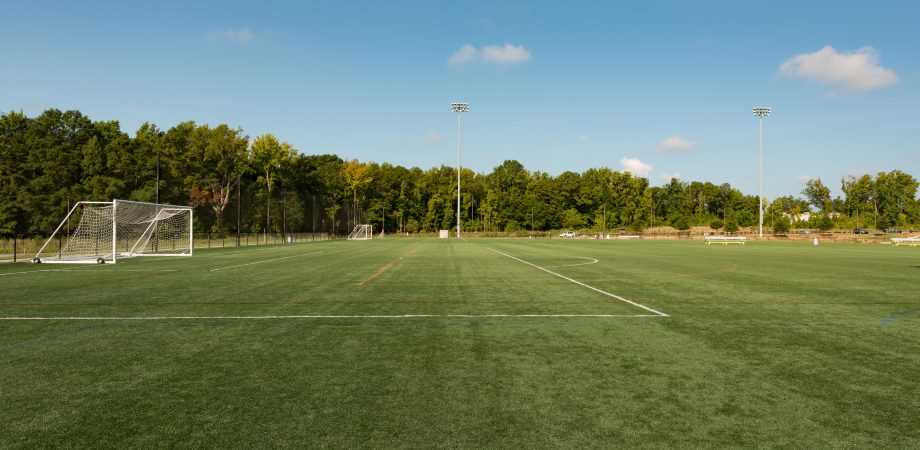Seeding Double

Both overseeding and dormant seeding go a long way in maintaining a healthy field. Here’s what you need to know about each:
Overseeding
Overseeding helps ensure a safe playing surface by maintaining turf density following play. You should overseed the entire field at least once a year in the late summer, but you may need to overseed high-traffic areas throughout the season as well. The area in front of the mound on baseball fields, the goalmouths on soccer fields, and hash marks on football fields should all be overseeded at least once every two weeks during the season.
Seed is one of the most cost-effective ways to keep fields full and coaches happy, so don’t hesitate to overseed at a higher rate in season. Overseeding rates always depend on your budget and the level, amount, and season of play on your field. It’s a good idea to aerify the field first, and then use a slit seeder for overseeding.
After overseeding your field, you should do several things for successful germination. One is topdressing, which helps ensure good seed-to-soil contact. Dragging the cores from aerification has a similar effect. You should also apply a starter fertilizer, which your ATS sales representative can help you select.
It’s vital to keep the seedbed moist after overseeding to allow the seeds to germinate. Immediately following the overseeding process, begin a frequent yet light irrigation program to keep the top inch or two of overseeded soil moist. Unless it rains, you should water two to four times a day until the seedlings are about two inches tall. Then you can begin to water less frequently and more deeply. Be careful not to overwater at any point in the process, because that can lead to disease and a host of other issues.
Although it may sound counterintuitive, mowing is another way to encourage seedling growth. Using sharp blades, mow when the ground is firm and the new grass reaches the desired cutting height. You’ll need to mow frequently so you’re not cutting more than a third of the grass blade at a time. Because the growing stand will contain varying stages of development, the first mowing will probably only cut some of the plants. With each successive mowing, though, you’ll cut more and more of the plants and encourage them to mature and fill in.
Dormant seeding
Dormant seeding is a viable option when a full-scale aerification and seeding operation isn’t feasible, as is often the case with sports fields being used late into the fall. For dormant seeding, it’s important to avoid seed germination in the late fall. Seedlings that germinated in November or December aren’t likely to make it through the winter. The best time for dormant seeding is when the soil temperature is around 40℉ and not below freezing.
Kentucky bluegrass is ideal for dormant seeding because it overwinters well and germinates early in the spring. It’s best introduced when traffic is low and seedlings have time to mature. Even with Kentucky bluegrass, though, it’s normal to see early spring germination rates of only about 50%. Similar to overseeding, using a slit seeder and pairing with aerification will yield better results by protecting the seed under a covering of soil. Dormant seeding is a good alternative to early spring aerification and seeding, which are often hampered by wet conditions and competition from weeds.
Overseeding and dormant seeding will help keep your field looking and playing well, season after season.







